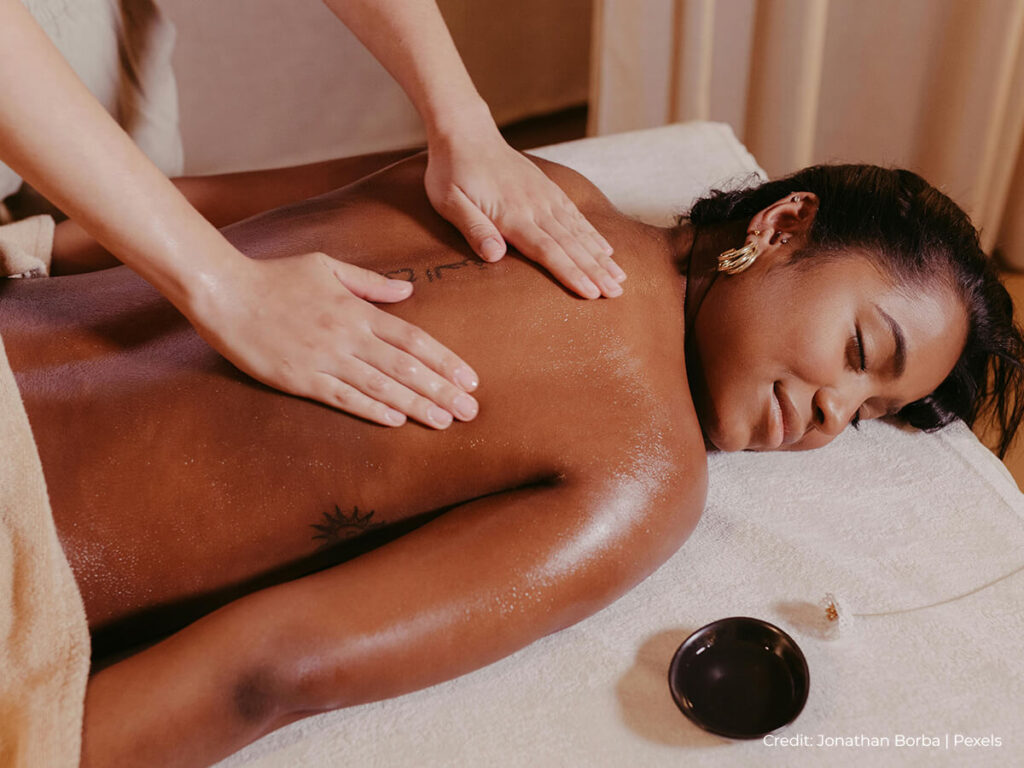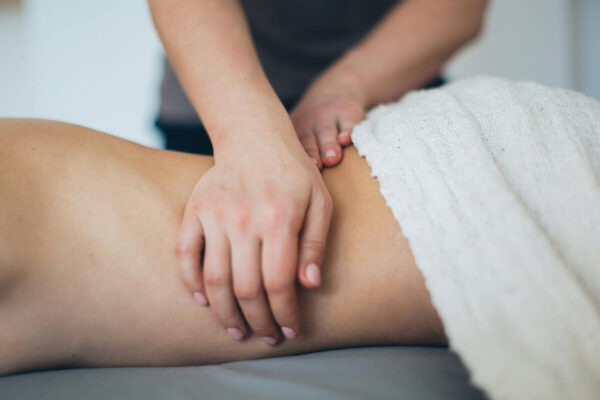How to Speed Up Muscle Recovery with Massage Techniques
Muscle recovery is an essential part of maintaining physical performance and overall well-being. Whether you engage in intense workouts, sports, or physically demanding activities, your muscles need time to heal and rebuild. Without proper recovery, you may experience soreness, stiffness, or even long-term injuries that could limit your mobility.
One of the most effective ways to support muscle recovery is through massage therapy. Different massage techniques help reduce muscle tension, improve blood circulation, and prevent inflammation. When used correctly, massage can enhance muscle function, shorten recovery time, and improve flexibility.
Why Muscle Recovery is Important
Recovering from physical exertion is just as important as the activity itself. When muscles undergo strain, small tears develop in the muscle fibres. These tears need time to repair and strengthen, leading to increased muscle endurance and improved overall function. Without proper recovery, muscles remain fatigued and susceptible to injury.
Muscle overuse without adequate recovery can result in strains, sprains, or more severe injuries. When muscles are not given time to heal, they become weak and unable to withstand repeated stress. This increases the likelihood of chronic pain and mobility issues. Prioritizing recovery ensures that muscles remain strong and resilient.
Well-recovered muscles function better, allowing for increased strength, flexibility, and endurance. Whether you are an athlete or someone with an active lifestyle, proper muscle recovery enables you to perform at your best. Strong, healthy muscles allow for smoother movements and greater efficiency in physical activities.
- Reduces Fatigue and Improves Energy Levels
Muscle fatigue can lead to feelings of exhaustion, making it harder to stay active. Recovery allows muscles to rebuild energy stores and function optimally. This helps prevent burnout and keeps the body feeling refreshed and ready for the next physical challenge.
How Massage Helps with Muscle Recovery

Massage therapy is a proven method for accelerating muscle healing and relieving soreness. By manipulating the soft tissues, massage improves circulation, reduces inflammation, and enhances flexibility. It also encourages relaxation, which plays a key role in the recovery process.
- Increases Blood Circulation
Good circulation ensures that oxygen and essential nutrients reach the muscles, helping them repair quickly. Massage promotes blood flow by stimulating the lymphatic and circulatory systems, allowing the body to eliminate metabolic waste efficiently. This reduces muscle stiffness and speeds up healing.
- Reduces Inflammation and Swelling
After intense physical activity, muscles often become inflamed due to microscopic damage. This leads to soreness and stiffness, making movement uncomfortable. Massage helps drain excess fluids and toxins from the muscles, reducing swelling and allowing for quicker recovery.
Tight muscles can limit movement and cause discomfort. Massage therapy helps relax and lengthen the muscles, preventing stiffness and improving flexibility. This is particularly beneficial for individuals who engage in repetitive motions, as it prevents muscular imbalances.
- Promotes Relaxation and Reduces Stress
Stress and tension can negatively impact muscle recovery. High stress levels increase cortisol production, which slows down the healing process. Massage helps lower cortisol levels, promoting relaxation and encouraging better sleep—both of which are essential for muscle repair.
Massage Techniques for Muscle Recovery
Various massage techniques offer unique benefits for muscle healing. The right technique depends on the level of muscle strain, recovery needs, and personal preferences. Below are some of the most effective methods for promoting muscle recovery.
Deep tissue massage applies firm pressure to reach the deeper layers of muscle and fascia. This technique is beneficial for breaking up adhesions, improving circulation, and reducing chronic muscle pain. It is often used by athletes or individuals with persistent muscle tightness.
The pressure used in deep tissue massage helps break down knots and improve muscle elasticity. While it can cause mild discomfort, the long-term benefits include increased mobility and reduced stiffness. Regular sessions can also prevent recurring muscle tension.
Swedish massage is a gentler technique that focuses on relaxation and blood circulation. It uses long, flowing strokes to ease muscle tension and improve oxygen flow to the tissues. This method is ideal for post-workout recovery, as it helps reduce soreness and promotes relaxation.
Unlike deep tissue massage, Swedish massage is not as intense, making it a great choice for individuals who want to relieve tension without experiencing discomfort. It also enhances lymphatic drainage, which helps eliminate toxins that accumulate after physical exertion.
Designed for athletes and physically active individuals, sports massage targets specific muscle groups that undergo repetitive stress. It combines deep tissue massage, stretching, and trigger point therapy to prevent injuries and improve performance.
Sports massage can be performed before or after intense physical activity. Pre-event massages help warm up the muscles and improve flexibility, while post-event massages reduce muscle soreness and prevent tightness. This technique is essential for those who engage in high-intensity workouts.
Trigger points are small, tight knots that develop in muscles due to stress or overuse. Trigger point therapy applies direct pressure to these knots to release tension and improve muscle function.
This technique is effective for individuals experiencing chronic muscle pain, as it helps relieve discomfort in specific areas. By addressing trigger points, this therapy reduces muscle stiffness and improves overall mobility.
Myofascial release focuses on stretching and loosening the fascia—the connective tissue surrounding muscles. When the fascia becomes tight, it restricts movement and causes pain. This technique uses gentle, sustained pressure to relax the fascia and improve muscle flexibility.
Individuals who experience stiffness and limited range of motion benefit greatly from myofascial release. It is often used in combination with other massage techniques to enhance overall muscle recovery.
- Lymphatic Drainage Massage
Lymphatic drainage massage uses light, rhythmic strokes to stimulate the lymphatic system. This helps remove excess fluids and toxins, reducing swelling and inflammation. It is particularly beneficial for individuals recovering from muscle injuries or surgery.
By improving lymphatic circulation, this technique enhances the body’s ability to heal naturally. It also boosts the immune system, helping the body recover from stress and fatigue.
- Percussion Therapy (Massage Guns)
Percussion therapy uses handheld massage guns to deliver rapid pulses to the muscles. These devices help break up muscle knots, increase blood flow, and reduce soreness. This technique is a convenient self-massage option for post-workout recovery.
Massage guns allow individuals to target specific muscle groups with precision. Regular use helps improve flexibility and prevent tightness, making it a useful tool for athletes and fitness enthusiasts.
How to Maximize the Benefits of Massage for Muscle Recovery

To get the most out of massage therapy, it is essential to incorporate other recovery strategies. Below are key ways to enhance the effectiveness of massage for muscle healing.
- Hydrate Before and After Your Massage
Water helps flush out toxins released during a massage, preventing dehydration and muscle cramps. When muscles are manipulated, metabolic waste and lactic acid are pushed into the bloodstream, requiring proper hydration to eliminate them efficiently. Drinking enough water before a massage ensures that tissues remain pliable, allowing for better muscle relaxation and reduced discomfort.
- Combine Massage with Stretching
Stretching after a massage helps maintain flexibility and prevent stiffness by elongating the muscles that have been loosened during the session. When combined with massage therapy, stretching improves blood circulation and enhances the delivery of oxygen and nutrients to recovering tissues. This practice also helps prevent adhesions and muscle knots from forming, which can lead to discomfort and restricted movement.
Heat therapy relaxes muscles before a massage by increasing blood flow, which makes tissues more pliable and receptive to deeper manipulation. Applying heat also helps relieve stiffness and enhances the effectiveness of massage techniques by loosening tight muscle fibres. On the other hand, cold therapy is beneficial after a massage, as it reduces inflammation and minimizes swelling caused by intense physical activity.
- Schedule Massages Regularly
Consistent massage therapy prevents chronic pain and improves circulation by keeping muscles relaxed and free from excessive tension. Regular sessions help break down adhesions and scar tissue, reducing the risk of stiffness and limited mobility. When incorporated into a routine, massage therapy also improves postural alignment, which can prevent long-term muscular imbalances.
- Pair Massage with Proper Nutrition
Eating a balanced diet rich in protein and anti-inflammatory foods supports muscle repair by providing essential amino acids for tissue regeneration. Proper nutrition enhances the effectiveness of massage by ensuring that muscles receive the necessary nutrients to rebuild and strengthen after physical exertion. Foods high in antioxidants, such as berries and leafy greens, help reduce muscle inflammation and speed up recovery.
Muscle recovery occurs during sleep when the body repairs damaged tissues and produces growth hormones that aid in healing. Poor sleep can slow down the recovery process by reducing the production of these essential hormones, leading to prolonged soreness and fatigue. Deep sleep phases allow muscles to relax fully, promoting overall repair and regeneration after a massage.
If a massage technique feels too intense, adjusting the pressure or duration ensures that it remains beneficial rather than uncomfortable. Pain or excessive soreness after a session may indicate that the muscles need a gentler approach to avoid strain or further damage. Being mindful of your body’s signals allows you to customize massage therapy to suit your specific recovery needs.
Speed Up Recovery with Massage Therapy in Scarborough at PARC of Ontario
For faster muscle recovery, professional massage therapy in Scarborough can make a significant difference. PARC of Ontario offers specialized treatments that help relieve tension, reduce soreness, and enhance flexibility. Whether you’re recovering from an intense workout or dealing with chronic muscle pain, their skilled therapists provide effective solutions. Call us today at (905) 579-9938 to book an appointment with PARC of Ontario!





